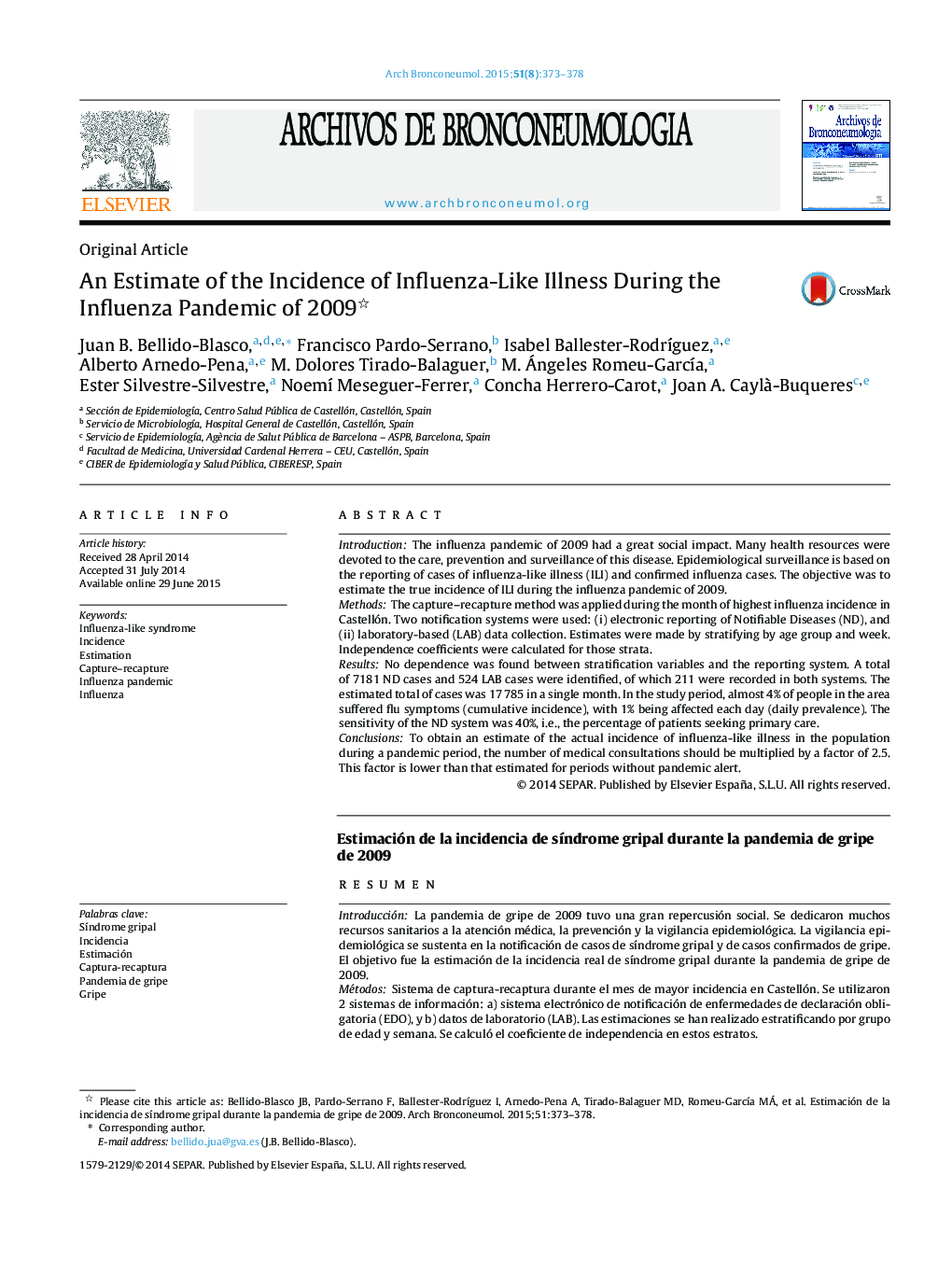| Article ID | Journal | Published Year | Pages | File Type |
|---|---|---|---|---|
| 4205364 | Archivos de Bronconeumología (English Edition) | 2015 | 6 Pages |
IntroductionThe influenza pandemic of 2009 had a great social impact. Many health resources were devoted to the care, prevention and surveillance of this disease. Epidemiological surveillance is based on the reporting of cases of influenza-like illness (ILI) and confirmed influenza cases. The objective was to estimate the true incidence of ILI during the influenza pandemic of 2009.MethodsThe capture–recapture method was applied during the month of highest influenza incidence in Castellón. Two notification systems were used: (i) electronic reporting of Notifiable Diseases (ND), and (ii) laboratory-based (LAB) data collection. Estimates were made by stratifying by age group and week. Independence coefficients were calculated for those strata.ResultsNo dependence was found between stratification variables and the reporting system. A total of 7181 ND cases and 524 LAB cases were identified, of which 211 were recorded in both systems. The estimated total of cases was 17 785 in a single month. In the study period, almost 4% of people in the area suffered flu symptoms (cumulative incidence), with 1% being affected each day (daily prevalence). The sensitivity of the ND system was 40%, i.e., the percentage of patients seeking primary care.ConclusionsTo obtain an estimate of the actual incidence of influenza-like illness in the population during a pandemic period, the number of medical consultations should be multiplied by a factor of 2.5. This factor is lower than that estimated for periods without pandemic alert.
ResumenIntroducciónLa pandemia de gripe de 2009 tuvo una gran repercusión social. Se dedicaron muchos recursos sanitarios a la atención médica, la prevención y la vigilancia epidemiológica. La vigilancia epidemiológica se sustenta en la notificación de casos de síndrome gripal y de casos confirmados de gripe. El objetivo fue la estimación de la incidencia real de síndrome gripal durante la pandemia de gripe de 2009.MétodosSistema de captura-recaptura durante el mes de mayor incidencia en Castellón. Se utilizaron 2 sistemas de información: a) sistema electrónico de notificación de enfermedades de declaración obligatoria (EDO), y b) datos de laboratorio (LAB). Las estimaciones se han realizado estratificando por grupo de edad y semana. Se calculó el coeficiente de independencia en estos estratos.ResultadosEn total se identificaron 7.181 casos EDO y 524 LAB, de los que 211 coincidían en ambos sistemas. La estimación total fue de 17.785 casos en un mes. Ello significa que en el periodo estudiado casi el 4% de las personas del área sufrieron un cuadro gripal (incidencia acumulada), y aproximadamente una de cada 100 personas estuvo diariamente afectada (prevalencia diaria). Acudieron a consulta de atención primaria (EDO) un 40% de los afectados (sensibilidad del sistema EDO).ConclusionesPara obtener una estimación de la incidencia real en la población durante la pandemia habría que multiplicar la cifra de consultas médicas por un factor de 2,5. Este factor es inferior al estimado en periodos sin alerta pandémica.
